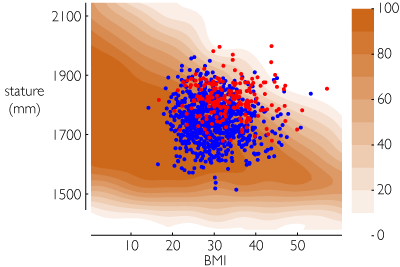This study investigates the nature of accommodation in products designed for human variability with the intent of improving tools for design decision-making. Accommodation, which describes the ability of a user to fit or use a device or environment in a preferred way, is a key measure of the performance of many devices. Methods that offer a better understanding of accommodation of broad user populations would allow for the design of products that are more cost-effective, safer, and/or lead to greater levels of customer satisfaction. Target user populations are often characterized by measures of anthropometry, or body dimensions. A methodology is proposed that makes extensive use of visual tools for understanding and exploring accommodation across the variability in anthropometry of a target user population. Two demonstration studies are presented that illustrate the methodology and provide opportunity for discussion of its impact. The first study investigates the simple univariate problem of dimensionally optimizing the seat height and range of adjustability of an exercise cycle. The second study investigates the more complex problem of optimally configuring the driver package of a commercial truck. Data from a 2001 study investigating the posture of commercial truck drivers is considered in this second demonstration study. The principal contributions of this research are methods for: (1) assessing binary accommodation of individuals using a “virtual fit” methodology, (2) evaluating the probability of accommodation for individuals, and (3) examining trends in the probability of accommodation across the range of anthropometric variability. Various factors influencing accommodation, such as user preference independent of anthropometry and the quality of a design, are also discussed.

